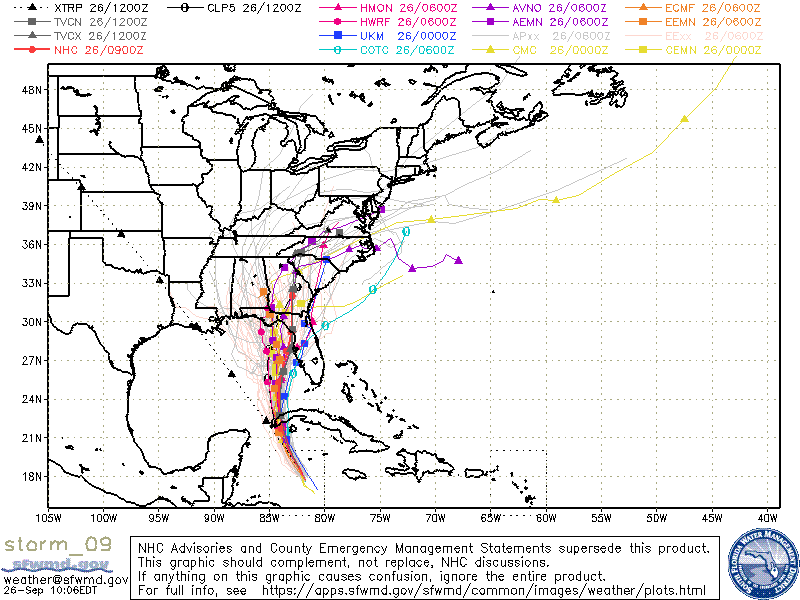There Is One Place You Do Not Want to Be Before a Hurricane Strikes—The Same Town As Jim Cantore

It was a little troubling to hear that Jim Cantore came to Tampa yesterday. He was not here for the Bucs football game.
One respected meteorologist who correctly made the prediction about Hurricane Harvey stopping, backing up, and leaving historic rainfall and flooding in Texas, made the following prediction this morning about Hurricane Ian:
A cold front will move southward, into the Florida Panhandle bringing much cooler air and also pushing Ian on a more easterly shift. Before last night, there was doubt on whether or not the cold front would reach Florida, allowing the GFS model to steer Ian towards the western panhandle area (Panama City, Destin, Pensacola).
As of this morning, the cold front will move into the western portion of the Florida Panhandle and the track from the GFS and ECMWF are coming together near the Big Bend area of Florida. Of course, there may still be a few surprises, but I’m confident that Ian will make landfall between Alligator Point and Cedar Key Florida on early Friday morning.
Hurricane tracks are notoriously unpredictable. One thing I tell everybody along the Gulf Coast is that if a storm is to the south, you have to pay attention to the storm track. Just a little wobble a few degrees east or west can significantly alter the impact of a hurricane. For example, Tampa was the dead center target for Hurricane Irma 24 hours before landfall. Then it wobbled slightly east and struck Naples. Tampa Bay was supposed to have a historic storm surge. Instead, it had a historic low tide with people walking on the bottom of Tampa Bay.
For everybody along the Florida Gulf Coast, constant vigilance is needed. I also recommend the FEMA checklist for last minute preparation. The introduction to this checklist states:
When disaster strikes, your immediate concern will be your safety and the safety of those you care about. Once the immediate danger passes, however, having your financial and medical records and important contact information will be crucial to help you start the recovery process quickly. Taking time now to safeguard these critical documents will give you peace of mind, ensure you have access to essential medical and prescription information, and help you avoid additional stress during the difficult days following a disaster.
In addition, take the time now to think about the priceless personal items you would want to protect from damage or take with you if you had to suddenly evacuate your home.
The first step is to take an inventory of your household documents, contacts, and valuables. The checklist below will get you started. Then download the Emergency Financial First Aid Kit (EFFAK) at www.ready.gov/financialpreparedness for more complete checklists and guidance on collecting and safeguarding this important information.
Put a checkmark next to any item that you may need to collect and safeguard. Be sure to include emergency contact phone numbers or other contact information with your documentation for questions that may arise following a disaster.
Pre-loss documentation of your home and your contents is so much easier today because of cell phones which have the capability of video. Spending 10-30 minutes making a video of the condition of the outside of your home and then of all the contents and interior can save a lot of time later. Such a video provides a before and after visual for you and your claims adjuster.
Thought For The Day
Success depends upon previous preparation, and without such preparation there is sure to be failure.
–Confucius







